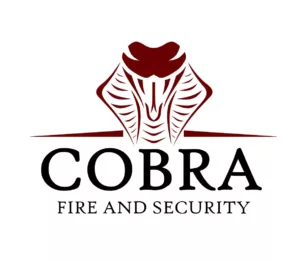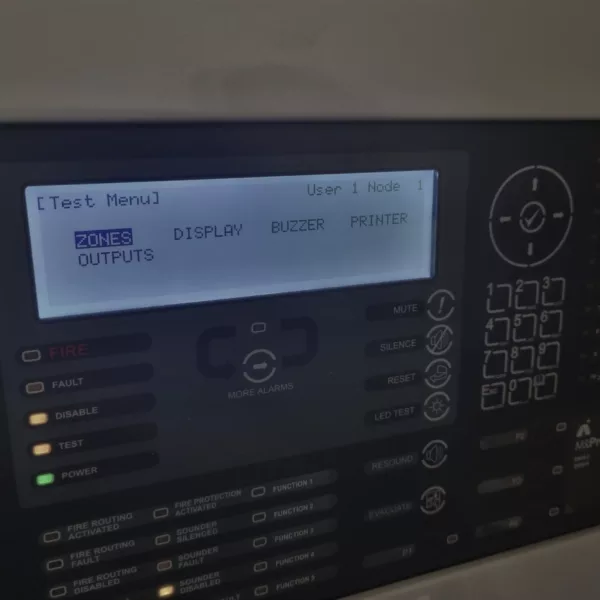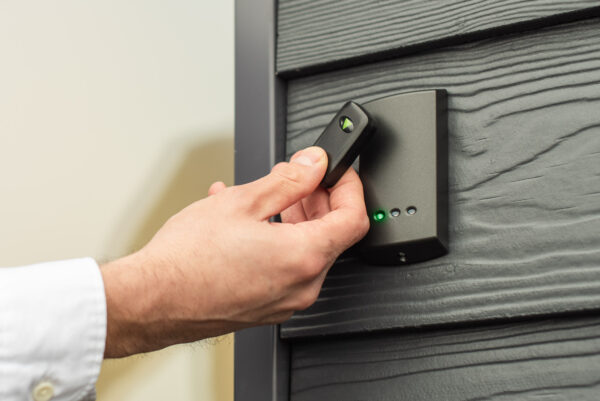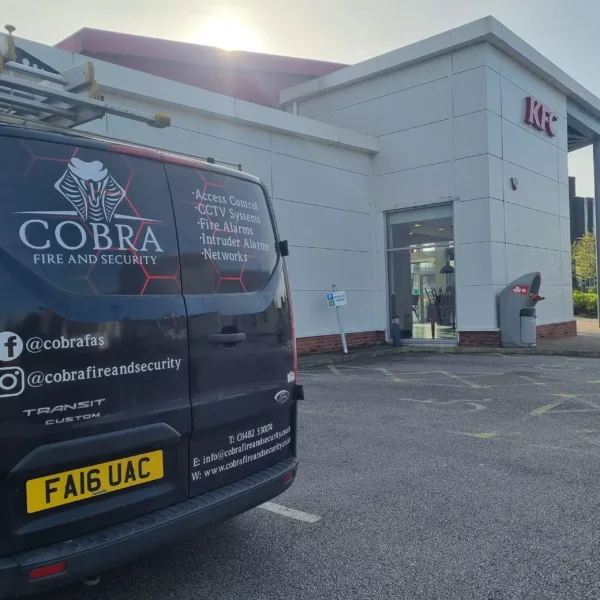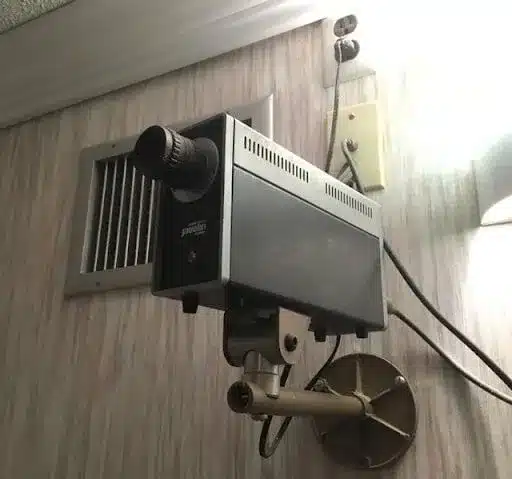
HMO Fire Regulations & Fire Safety Checklist
This article by Cobra Fire and Security sheds light on the distinctive fire safety regulations that apply to houses of multiple occupants (HMOs), which vary from those of regular residential properties. The piece delves into these HMO fire regulations and suggests ways in which landlords and property managers can comply with them. The article also includes a fire safety checklist for HMOs.
Fire Safety Checklist
This checklist is designed to assist landlords, property managers, and designated responsible persons in determining whether their HMO meets all applicable fire safety requirements. Ensuring that the following items are checked and addressed is crucial for the safety of the occupants:
- Smoke Detectors: The first item on the list is to check whether smoke detectors are installed in the HMO. If they are installed, they must be working correctly. Smoke detectors play a vital role in detecting the first signs of fire and alerting the occupants to take necessary action.
- Visible Escape Routes: Next, it is essential to ensure that the escape routes in the HMO are clearly visible and well-lit. Occupants should be able to find their way out of the building in case of an emergency.
- Fire Doors: It is crucial to ensure that all fire doors in the HMO meet the 30-minute fire resistance criteria and have self-closing mechanisms. Fire doors prevent fire from spreading between rooms and give occupants more time to evacuate.
- Furniture Safety: All furniture in the HMO should be fire-safe. Combustible materials, such as curtains, bedding, and upholstered furniture, should be made of fire-retardant materials.
- Intumescent Strips: Fire doors must have intumescent strips with smoke seals. Intumescent strips are designed to expand when exposed to heat, sealing the gap between the door and the frame to prevent smoke and flames from spreading.
- Fire Blanket: A fire blanket must be provided in the kitchen to help smother small fires that may occur.
- Separation of Combustible Materials and Ignition Sources: Combustible materials and ignition sources should be kept separate to reduce the risk of fire. For example, smoking should be prohibited inside the HMO, and flammable liquids should be stored in a separate room.
- Fire Risk Assessment: Lastly, it is necessary to carry out a fire risk assessment. This assessment will identify fire hazards and evaluate the risk of fire in the HMO. It will help landlords and property managers to take necessary steps to reduce the risk of fire and ensure the safety of occupants.
By regularly reviewing this checklist, landlords, property managers, and designated responsible persons can ensure that their HMO is up to code and safe for occupants.
Why the HMO Fire Regulation?
The UK Government’s Sleeping Accommodation Guide has stated that in 2004, non-domestic building fires led to the attendance of fire and rescue services in over 33,400 instances. Sadly, these fires resulted in the loss of 38 lives and injuries to over 1,300 individuals. Furthermore, the associated costs including property damage, human casualties, and lost business amounted to an estimated £2.5 billion.
It is evident that the potential damage caused by fires can be catastrophic. The primary purpose of fire regulations is to safeguard tenants, and provide them with the best and most efficient means of escape in the event of a fire.
The Housing Act of 2004 has introduced a Health and Safety Rating System (HHSRS), licensing for Houses of Multiple Occupancy (HMOs), and management regulations for HMOs. The primary regulation for Fire Safety in HMOs is the Regulatory Reform (Fire Safety) Order 2005 (FSO).
As an HMO landlord, it is incumbent on you to conduct fire risk assessments in your property to mitigate the risk of a fire. This is a critical aspect of your duty of care to your tenants, and it is imperative that you take it seriously.
What is a Fire Risk Assessment
Under the Regulatory Reform (Fire Safety) Order 2005 (FSO), it is the responsibility of the person in charge of a property to take reasonable steps to ensure the safety of the premises and its occupants.
As per the Sleeping Accommodation Guide, a Fire Risk Assessment can be defined as a systematic and organized evaluation of a property, its activities, and the likelihood of a fire starting that could cause harm to those present in and around the premises.
The main objectives of a Fire Risk Assessment are to identify any potential fire hazards, reduce the risk of such hazards as much as possible, and establish safety measures to ensure the safety of the premises and its occupants.
For the purpose of a Fire Risk Assessment, a hazard refers to anything that has the potential to cause harm, while risk refers to the likelihood of such harm occurring. It is important to conduct a thorough Fire Risk Assessment to ensure the safety of your tenants and your property, and to comply with the relevant fire safety regulations.
Fire Risk Assessment Requirements for HMOs
As per the Health and Safety Rating System (HHSRS), HMOs are required to undergo Fire Risk Assessments.
The main purpose of a Fire Risk Assessment is to identify potential fire hazards and establish safety measures to minimize the risk of harm. It is the responsibility of the landlord or managing agent to conduct the Fire Risk Assessment and implement the recommended safety measures.
If needed, a qualified individual can also be hired or contracted to perform the Fire Risk Assessment. By ensuring that your HMO has undergone a thorough Fire Risk Assessment, you can promote the safety of your tenants and adhere to the fire safety regulations.
Smoke Alarm Systems for Houses of Multiple Occupancy (HMOs)
Houses of Multiple Occupancy (HMOs) are defined by BS 5839 part 6 as houses occupied by individuals who do not form a single household. Typically, these are large houses that have been converted into flats or bedsits. To ensure safety, it is important to install a suitable smoke alarm system in HMOs. The communal area may also fall under BS 5839 part 1. You can learn the differences in our blog about BS 5839.
For HMOs with one or two storeys where the individual floor area is no more than 200sqm, the British Standard recommends installing a Grade D, category LD3 smoke alarm system. This refers to mains powered smoke and heat alarms with a built-in back-up battery power supply, and the alarms can be interconnected either by wire or by radio signal. Category LD3 requires smoke alarms in all circulation spaces that form part of the escape routes from the dwelling, such as hallways and landings. If necessary, the level of cover may be increased to LD2 based on a fire risk assessment.
For HMOs with three storeys or higher, there are two options available. The first option is to have a Grade A fire alarm system installed throughout the building, which consists of a conventional or addressable fire alarm panel, and then fire alarm detectors, call points, sounders, and beacons are specified based on the layout and requirements of the property. The second option is to have a mixed system, which comprises of Grade D, category LD3 in the individual dwellings and a separate Grade A system in the communal areas. The category of cover in the individual dwellings can be increased to LD2 if needed. A mixed system is becoming the preference to reduce the impact of nuisance alarms from individual flats on other occupants.
For Grade D systems, it is becoming more acceptable to install radio-interlinked smoke and heat alarms with 10-year sealed batteries rather than mains powered smoke and heat alarms, especially if retrofitted. This saves the cost for the electrician and these systems can be installed quickly. However, it is still recommended to confirm with building control or the relevant council department before installing these systems.
Reviewed: 13/02/2023 Our articles are reviewed regularly. However, any changes made to standards or legislation following the review date will not have been considered. Please note that we provide abridged, easy-to-understand guidance. To make detailed decisions about your fire safety provisions, you might require further advice or need to consult the full standards and legislation.
Share this article
Written by : Michael Winter
Follow us
A quick overview of the topics covered in this article.
Latest articles
July 12, 2025
July 12, 2025
